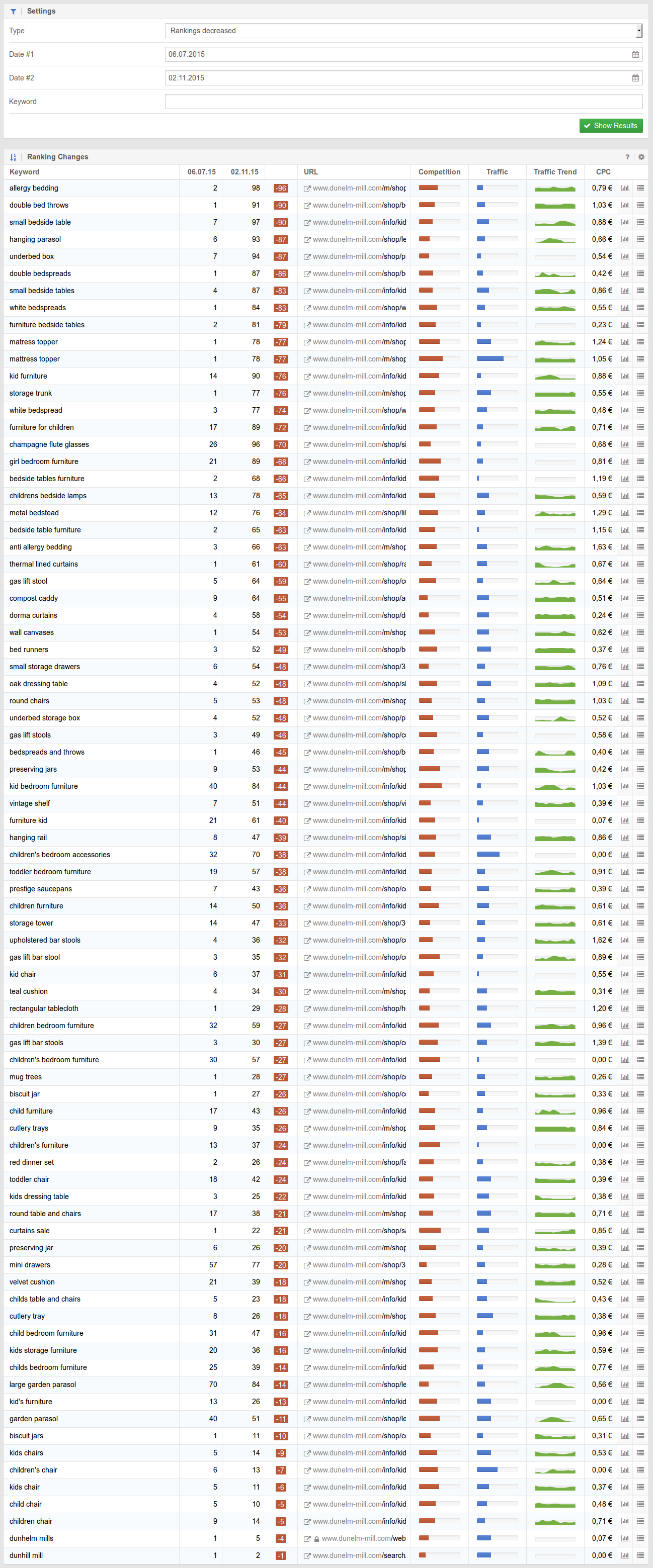In theory, changing your domain name should not be complicated, especially if you follow the instructions Google provides. In practice, we can find numerous examples that contradict such rosy expectations. Changing the address of a website will always be accompanied by a certain degree of risk and the price you pay, in the end, could be higher than your initial estimates, with the currency usually being the search engine rankings you worked so hard for.
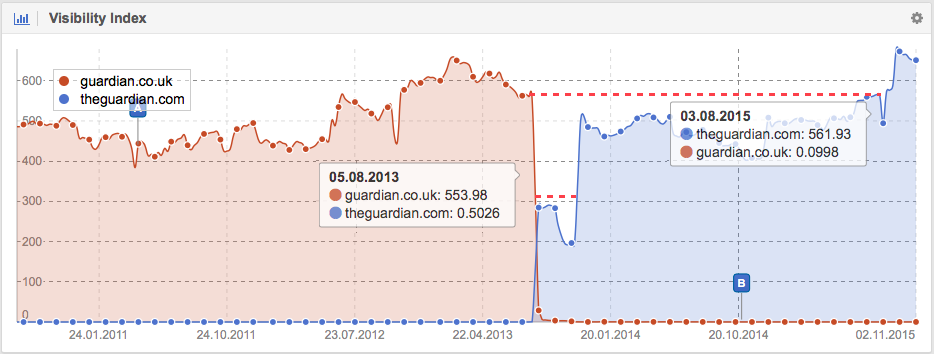
The most popular example is Theguardian.com, where it took two long years before they managed to get back to the same level of visibility within Google that they had before the domain name change. This is also a great example for how Google can take a long time, three month in this case, before the entire domain was crawled and processed.
What are the consequences that a domain change can cause and what might be the reasons for a drop in visibility afterwards? In this blog post we will use a more recent example to show you what may happen after a domain name change.
Update: 2018 updates added at the end of the article.
Dunelm-mill.com changed to Dunelm.com
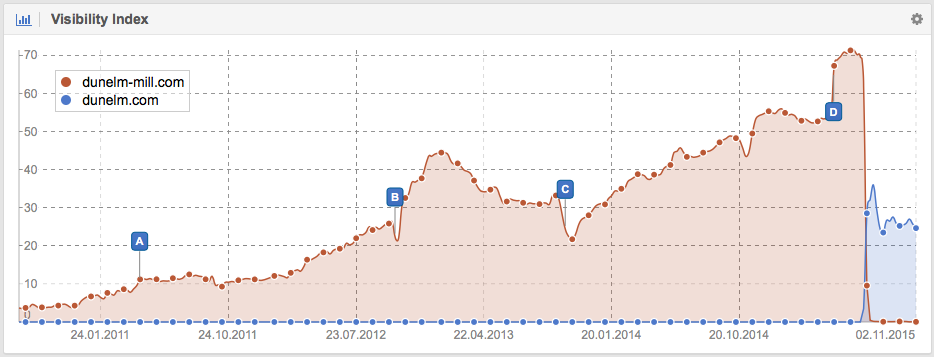
Both the domain name change for Theguardian.com and Dunelm.com make it clear that Google may not immediately transmit all the quality signals from the old domain name to the new. It may come as a surprise that Google actually needs some time to move all the important quality signals, such as authority, reputation, trust, user signals and the internal PageRank budget for crawling and indexing, between the two domains. This is, in part, due to the fact that Google has to crawl all internal links and pages on the old website once again to identify all redirects, in order to transfer the quality signals to the new domain.
In the case of Dunelm.com we do not only see a domain name change but also a reworking of the internal structure of the site. It may make sense to combine two such events but let us look at the prominent directories on the old page for a moment. Just go to “Directories“, click on the cogwheel in the top right hand corner of the chart and choose a date right before the domain name change.
Before changing the domain name (06 Jul. 2015)
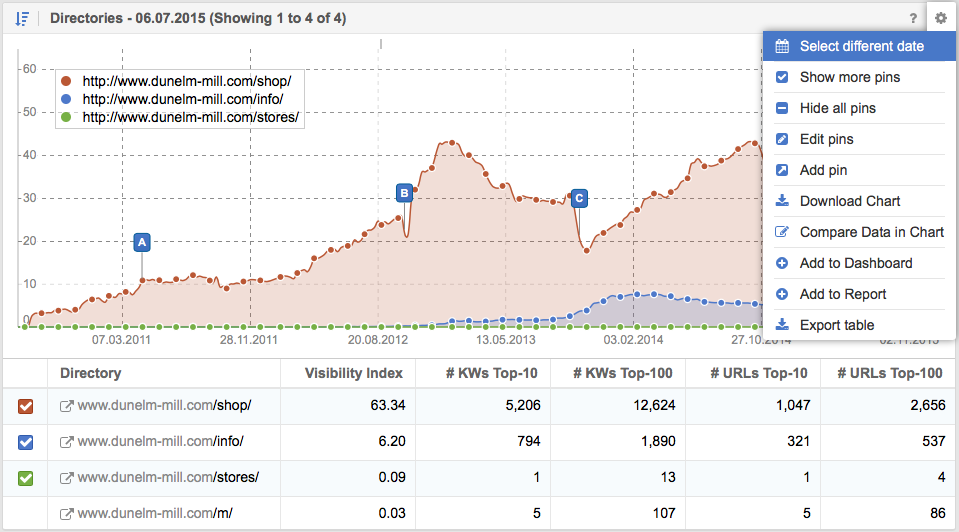
After changing the domain name (02 Nov. 2015)
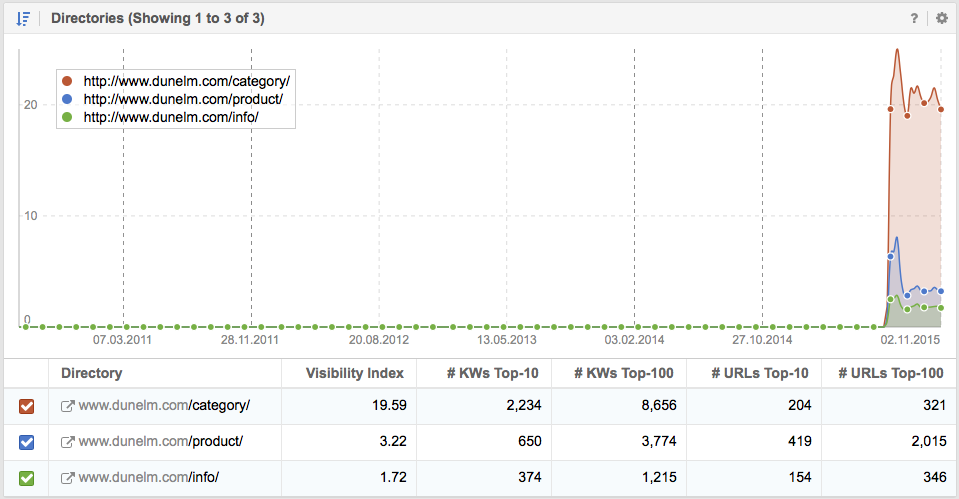
The changes to the site architecture make it difficult to pinpoint the exact culprit for the loss in visibility. When we take a look at the visibility curve three months later, during which time Google had a chance to find all redirects and transfer as many of the quality signals as they were likely to, we have to come to terms with the overall decrease in visibility.
Let’s compare the most important category on the old domain, http://www.dunelm-mill.com/shop/ to its new counterpart http://www.dunelm.com/category/
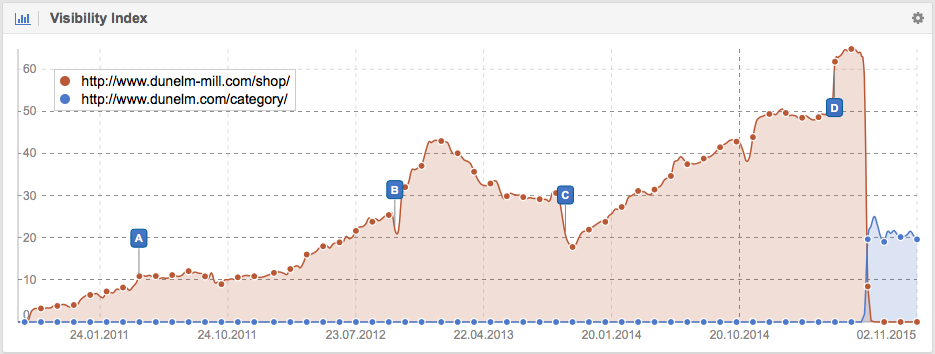
From there, we have to evaluate what happened and come up with possible solutions. For this, the best first course of action starts by looking at the rankings.
Lost Rankings
You can easily run a query for the “Ranking Changes” of a domain, the menu item can be found in the left hand navigation. There we can chose a date before the domain name was changed and the site’s structure remodelled (06 Jul. 2015) and compare it to the current data (02 Nov. 2015). Both the filters “Decreased Rankings” and “Lost Keywords” are what we are interested in.
Decreased Rankings:
Lost Keywords:
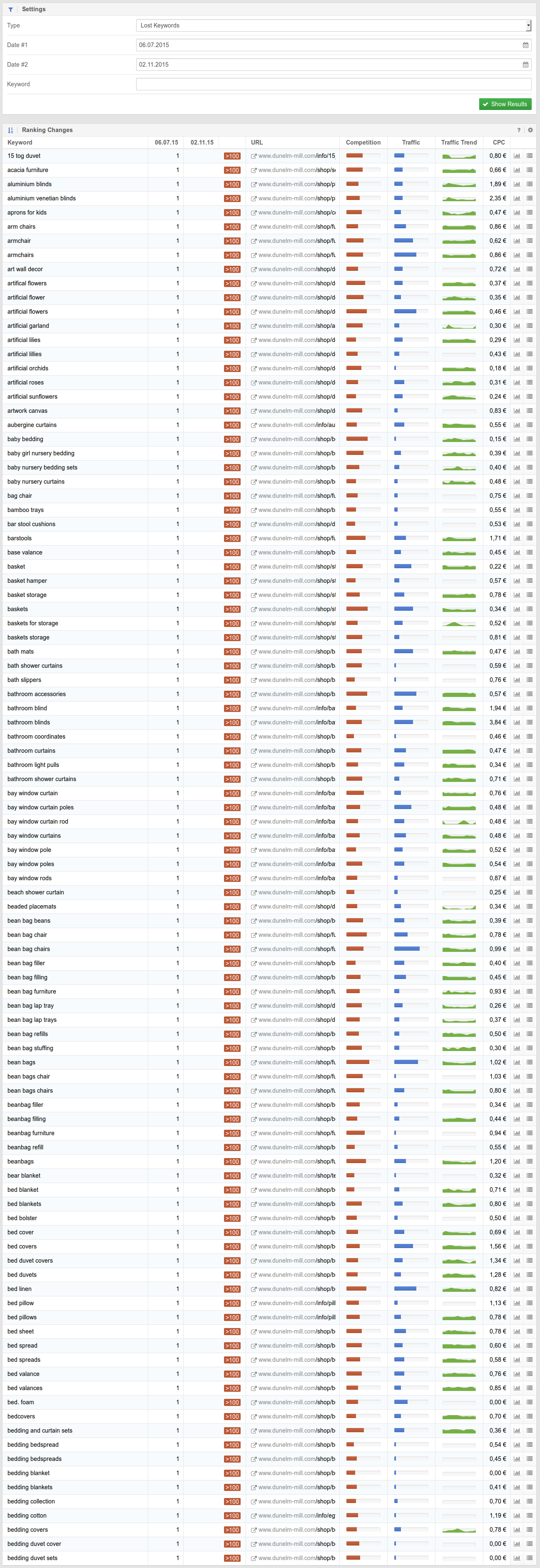
Here we have a good starting point for repairing the damage done, as you will not only find the keywords that were lost but you can also see the position, ULR, traffic, competition and more. We should not forget that there are now two domains which should be analysed by comparing them to each other. Let us take a closer look at some important keywords, like “Kids chairs”, by clicking on “Show Keyword History“:

Next, you can click on the cogwheel in the top right hand corner of the chart and chose “Compare Data in Chart” to add another domain to the graph:
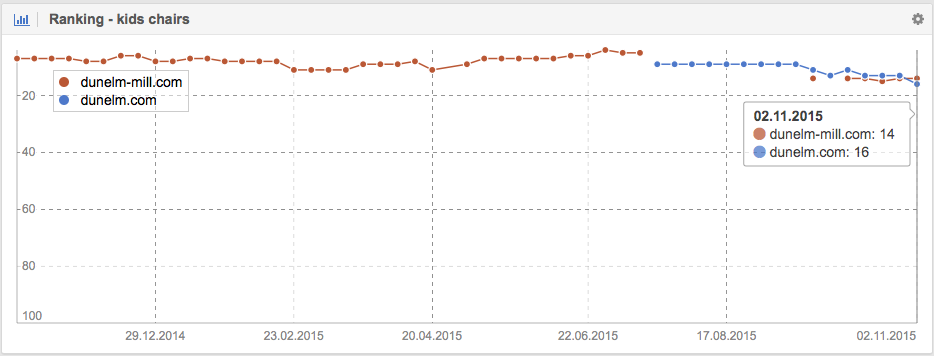
It is quite interesting to see that now both domains rank, and thereby compete, for the same keyword. This is also the reason why they lost their position on the first results page.
It is also important to keep in mind that a keyword like “Bathroom accessories” is not really gone, since the ranking changed over to the new domain, albeit at a lower position:
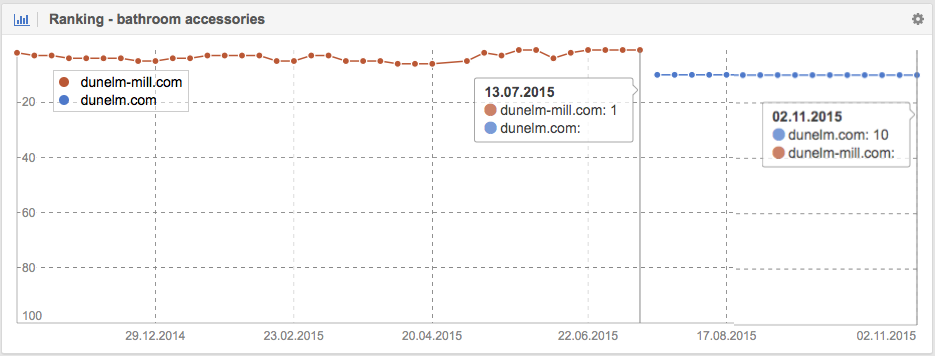
Redirects
While evaluating what went wrong, we notice another technical problem that can have a negative effect on a new domain: some of the 301-redirects from Dunelm-mill.com to Dunelm.com are not going to the correct targets on the new domain. Additionally, some pages on the old domain return a 404-error code instead of redirecting to their counterpart on the new domain. We can use the live-check on “Links > Linked Pages” to examine the status codes for the best-linked pages:
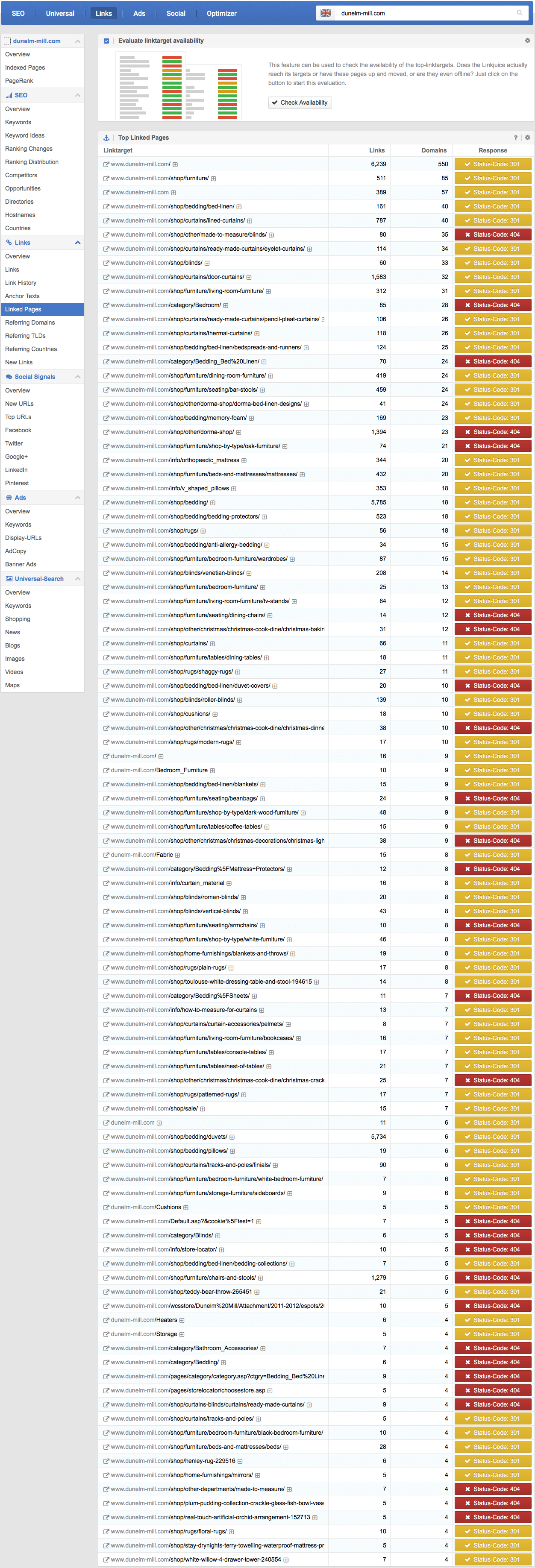
Looking at the 404-errors we can isolate at least two pages that should have 301-redirects to their counterparts instead of an error code. If we take only these two pages, we have a total of 165 backlinks from 63 domains which are simply lost, even though one of the pages can be found on the identical URL on the new domain and the other only has a slightly different URL structure.
Destination for the backlinks:

Checking the page in your browser (if you want just click on the square with the arrow in front of the URL):
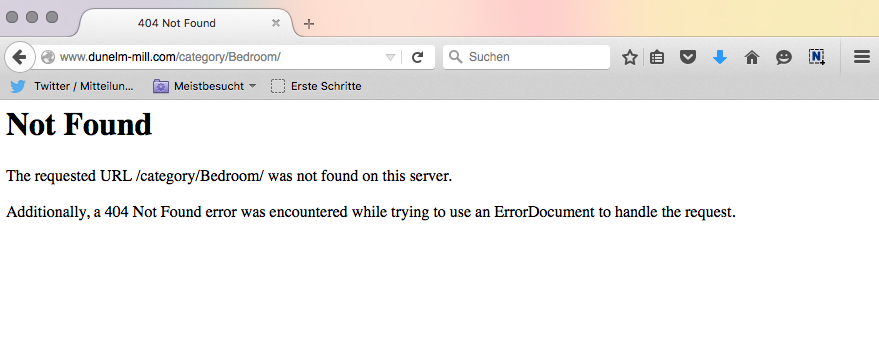
But this directory does exist 1:1 in the new version:
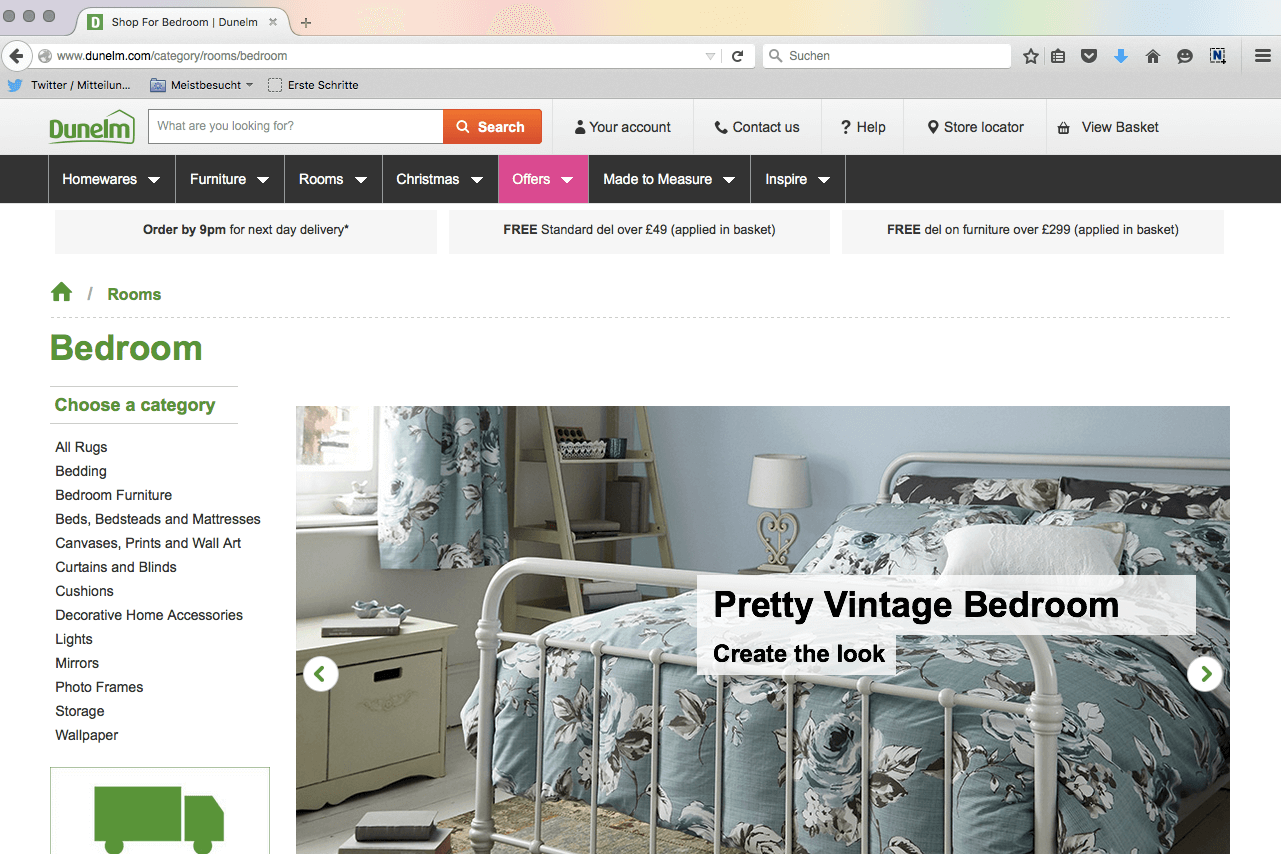
Another very similar case:

A very similar page exists in the new version:
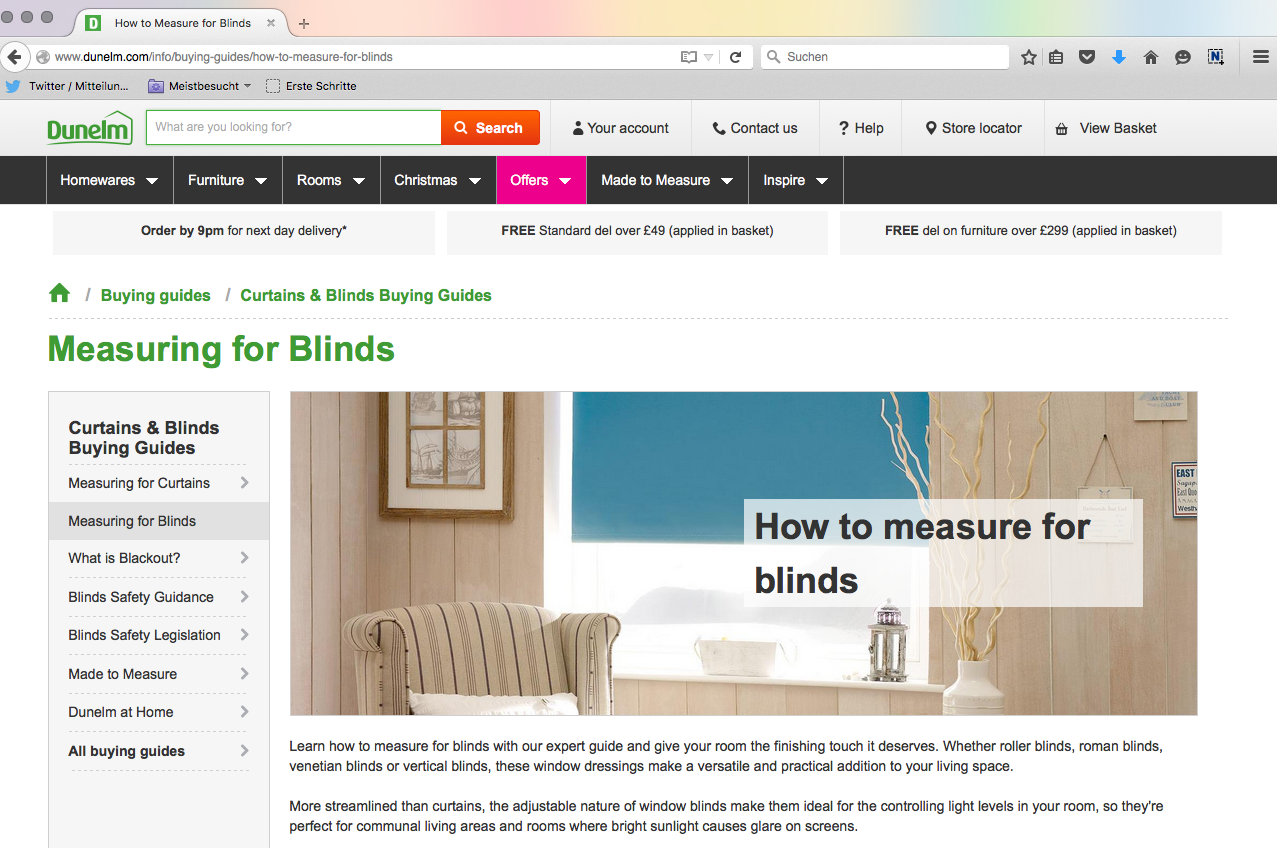
Soft-404
Going through the 301-redirects we find pages where the destination on the new domain does not correspond to what a user would expect the content to be. This URL for example adds 40 domains (161 backlinks) to the link-graph:

When a user visits the old URL, they expect to find a page for “bed linen” as it has been in the past:
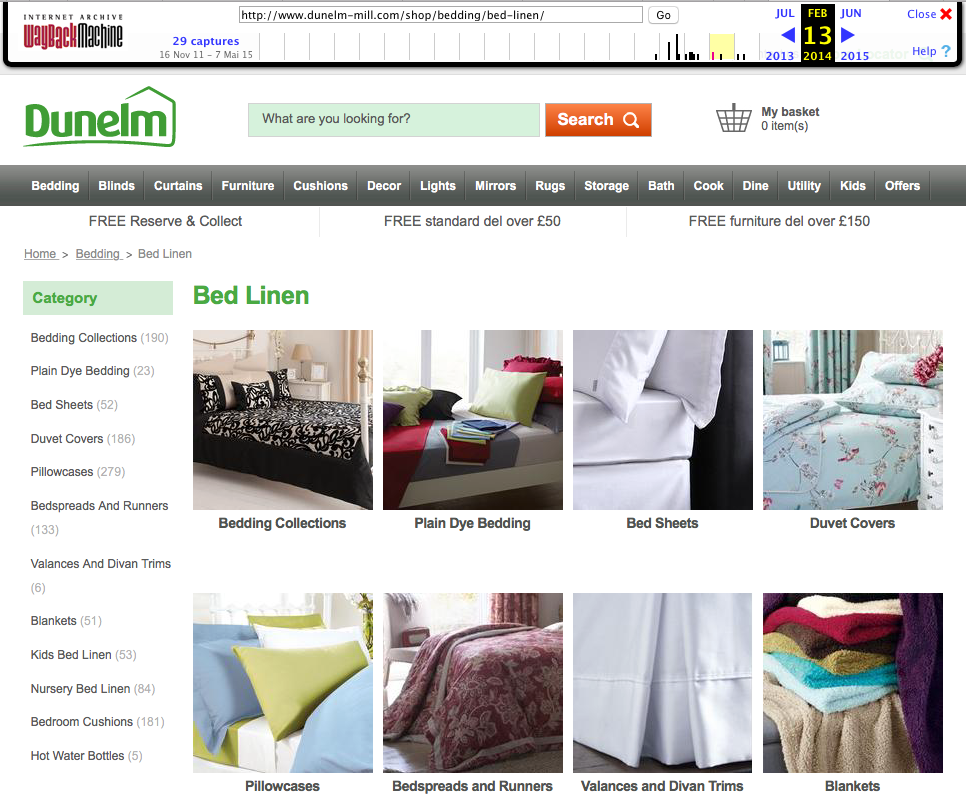
Sadly they end up on the top-category page for bedding on the new domain:

While there may be internal reasons for setting up something like this, please keep in mind that if a user clicks on a link that promises them a page for “iPhone6”, they do not want to be redirected to a page for “Cell Phones”, something that Google knows as well.
Additional examples are “Door Curtains” (32 Domains, 1,583 Links) and “Therman Curtains” (26 domains, 118 links):


Conclusion
To get a feel for the impact generated by changing the domain name, I would like to quote an article from last year in the Leicester Mercury. In this interview with Nick Wharton, chief executive of Dunelm, Ian Griffin ironically mentions the negative impact of the website relaunch by Dunelm’s competitor Marks & Spencer:
“Dunelm’s online growth was in marked contrast to high street giant Marks & Spencer, Which yesterday (TUES) Reported an 8.1 per cent fall in online sales in the 13 weeks to June 28 after admitting the launch of a new website had a negative impact on you go out.”
This was the impact on Marks & Spencer:
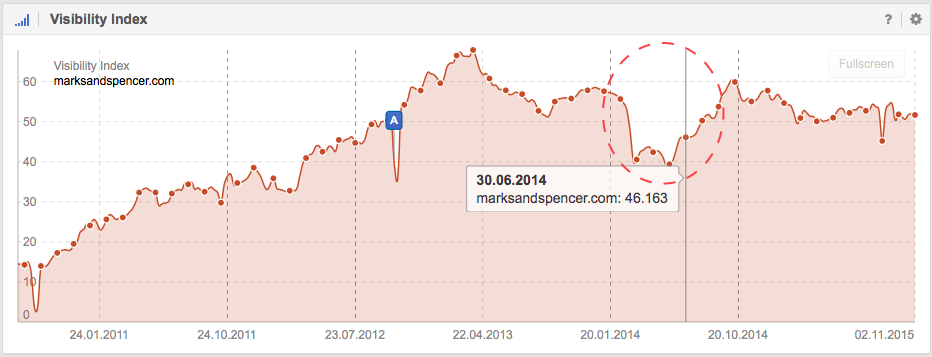
You should now be able to grasp the true impact of Dunelm’s visibility loss. It is important to realise that during a domain name change, even if the move is done perfectly, it should be openly communicated that Google will need some time, maybe even a whopping three month, to figure out and understand the entire move.
My recommendation in a case as with Dunelm.com would be to do the domain name change first and wait for Google to notice and understand the move before you make changes to the site architecture. By doing so, you will be able to better evaluate what happened if problems should arise and take the appropriate measures.
I keep my fingers crossed for Dunelm, that they’ll recover soon and I hope you enjoyed this post.
2018 Update: SEOs still making the same mistake.
3 years after the domain move we’re still seeing Dunelm.com struggle to reach the heights of Dunelm-mill.com. Obviously there have been content changes, algorithm changes, competitor changes, fashion changes, brand-awareness changes and likely SEO-related changes so it’s impossible to say whether the original domain would still rank as well. Dunelm.com appears to have started to grow well in the last 12 months though and it would be interesting to know if there were major SEO-related changes done during the summer of 2017. If Dunelm.com continues the path the story will have ended as a successful, but costly one.
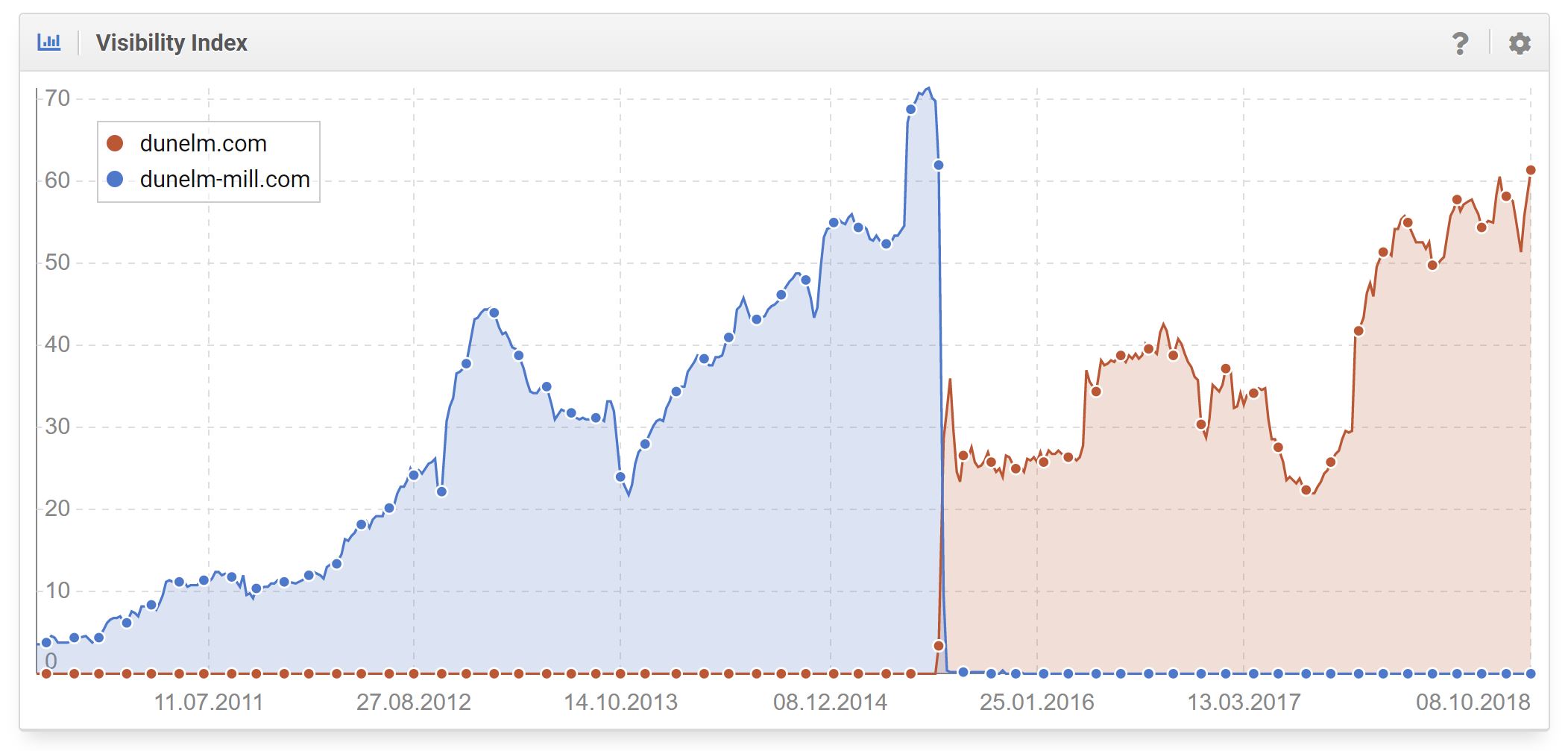
Paperchase Sept 2018.
We started to see the move from Paperchase.co.uk to Paperchase.com in September. Consolidating domains and moving to a single Hreflang-driven content structure is an obvious route to take. It’s a tough one though. Not only is this a domain move but it’s one that involves the tricky aspect of managing international content on one web server. (Our Hreflang guide can help.) The same rule applies here though. Don’t make the move too complicated for Google by adding site structure changes. At first glance it looks like Paperchase have done an excellent job of moving content into the same structure but there are some areas where the structure has changed. Google has responded.
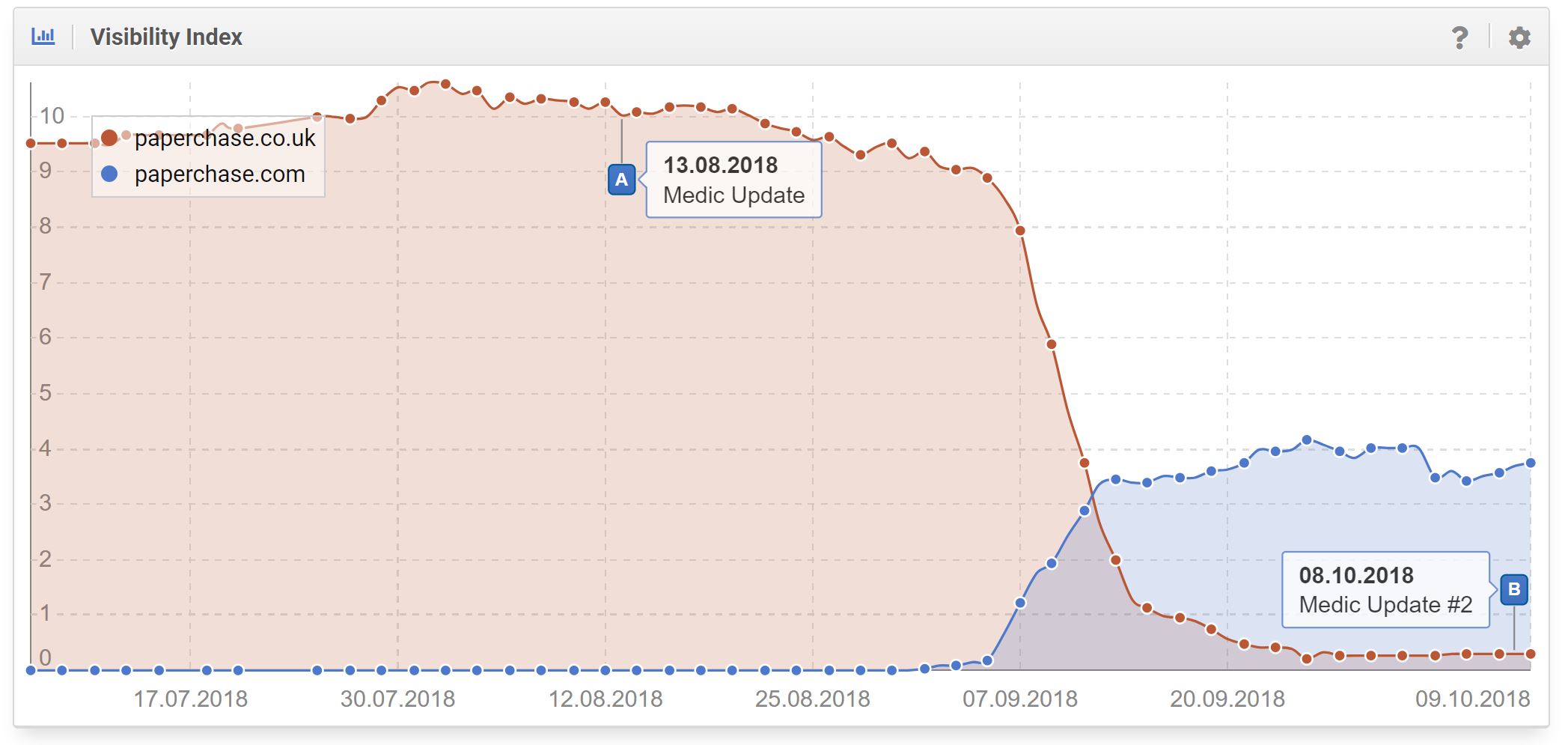
The picture is almost exactly the same as we saw with Dunelm in 2015.
Lesson: Google clearly didn’t like a domain change and a structure change in 2015 and it still doesn’t like it today. Will it take Paperchase three years to reclaim the lost SERPs space?
